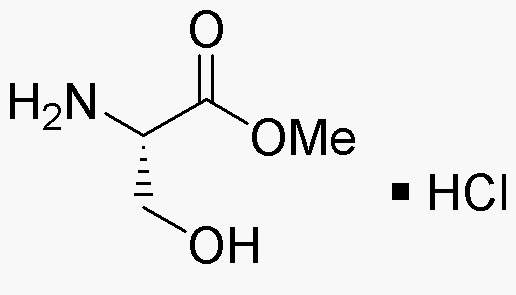L-Serine methyl ester hydrochloride is widely utilized in research focused on:
- Biochemical Research: It serves as a building block for synthesizing various peptides and proteins, aiding researchers in studying protein structure and function.
- Neuroscience: This compound is used in studies related to neurotransmitter synthesis, particularly in exploring the role of serine in brain function and neuroprotection.
- Pharmaceutical Development: It plays a role in drug formulation, particularly in developing medications targeting neurological disorders, enhancing bioavailability and efficacy.
- Metabolic Studies: Researchers utilize it to investigate metabolic pathways involving amino acids, helping to understand diseases linked to amino acid metabolism.
- Cosmetic Industry: Its properties are leveraged in formulating skin care products, providing moisturizing benefits and promoting skin health due to its amino acid content.
General Information
Properties
Safety and Regulations
Applications
L-Serine methyl ester hydrochloride is widely utilized in research focused on:
- Biochemical Research: It serves as a building block for synthesizing various peptides and proteins, aiding researchers in studying protein structure and function.
- Neuroscience: This compound is used in studies related to neurotransmitter synthesis, particularly in exploring the role of serine in brain function and neuroprotection.
- Pharmaceutical Development: It plays a role in drug formulation, particularly in developing medications targeting neurological disorders, enhancing bioavailability and efficacy.
- Metabolic Studies: Researchers utilize it to investigate metabolic pathways involving amino acids, helping to understand diseases linked to amino acid metabolism.
- Cosmetic Industry: Its properties are leveraged in formulating skin care products, providing moisturizing benefits and promoting skin health due to its amino acid content.
Documents
Safety Data Sheets (SDS)
The SDS provides comprehensive safety information on handling, storage, and disposal of the product.
Product Specification (PS)
The PS provides a comprehensive breakdown of the product’s properties, including chemical composition, physical state, purity, and storage requirements. It also details acceptable quality ranges and the product's intended applications.
Certificates of Analysis (COA)
Search for Certificates of Analysis (COA) by entering the products Lot Number. Lot and Batch Numbers can be found on a product’s label following the words ‘Lot’ or ‘Batch’.
*Catalog Number
*Lot Number
Certificates Of Origin (COO)
This COO confirms the country where the product was manufactured, and also details the materials and components used in it and whether it is derived from natural, synthetic, or other specific sources. This certificate may be required for customs, trade, and regulatory compliance.
*Catalog Number
*Lot Number
Safety Data Sheets (SDS)
The SDS provides comprehensive safety information on handling, storage, and disposal of the product.
DownloadProduct Specification (PS)
The PS provides a comprehensive breakdown of the product’s properties, including chemical composition, physical state, purity, and storage requirements. It also details acceptable quality ranges and the product's intended applications.
DownloadCertificates of Analysis (COA)
Search for Certificates of Analysis (COA) by entering the products Lot Number. Lot and Batch Numbers can be found on a product’s label following the words ‘Lot’ or ‘Batch’.
*Catalog Number
*Lot Number
Certificates Of Origin (COO)
This COO confirms the country where the product was manufactured, and also details the materials and components used in it and whether it is derived from natural, synthetic, or other specific sources. This certificate may be required for customs, trade, and regulatory compliance.


